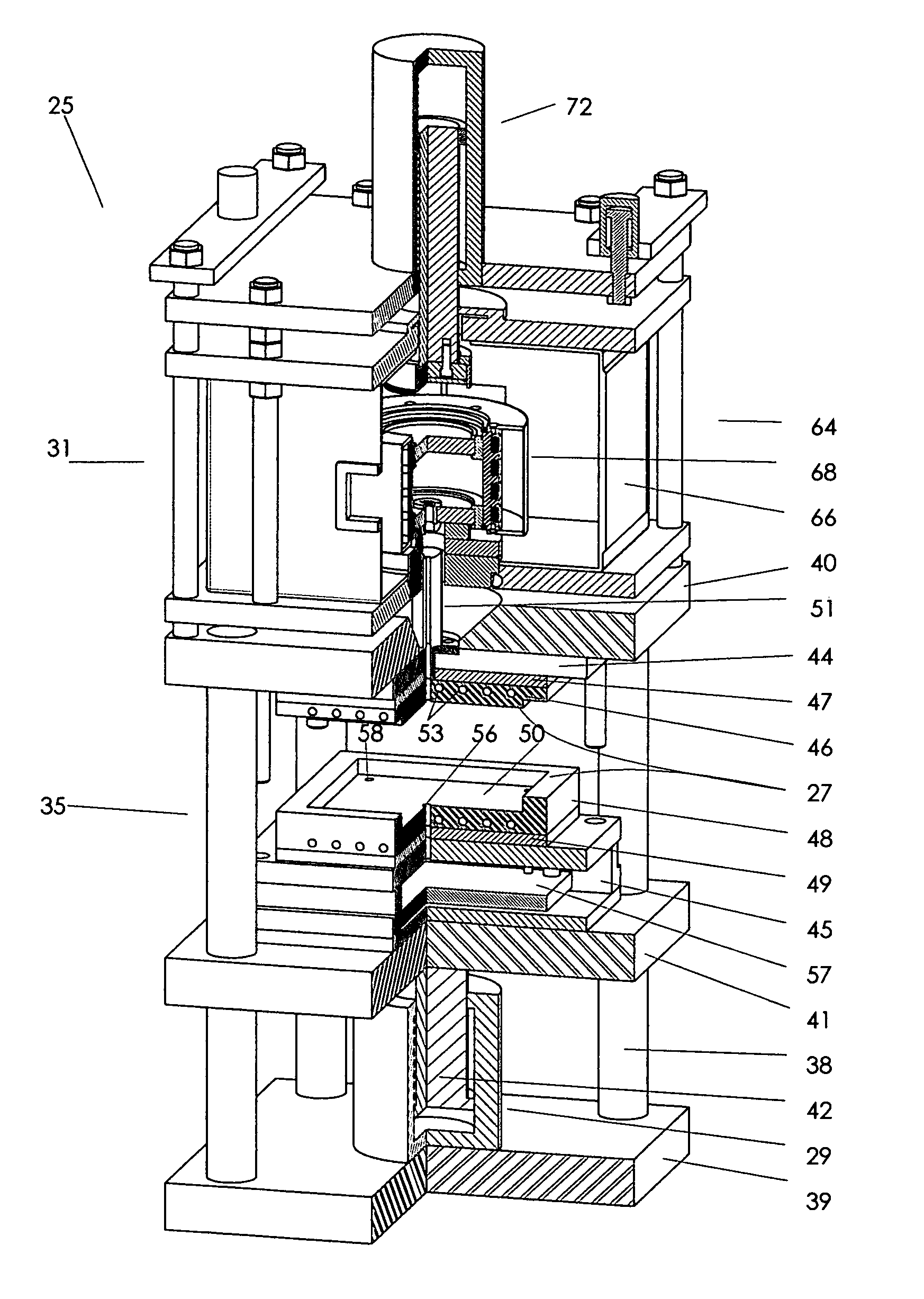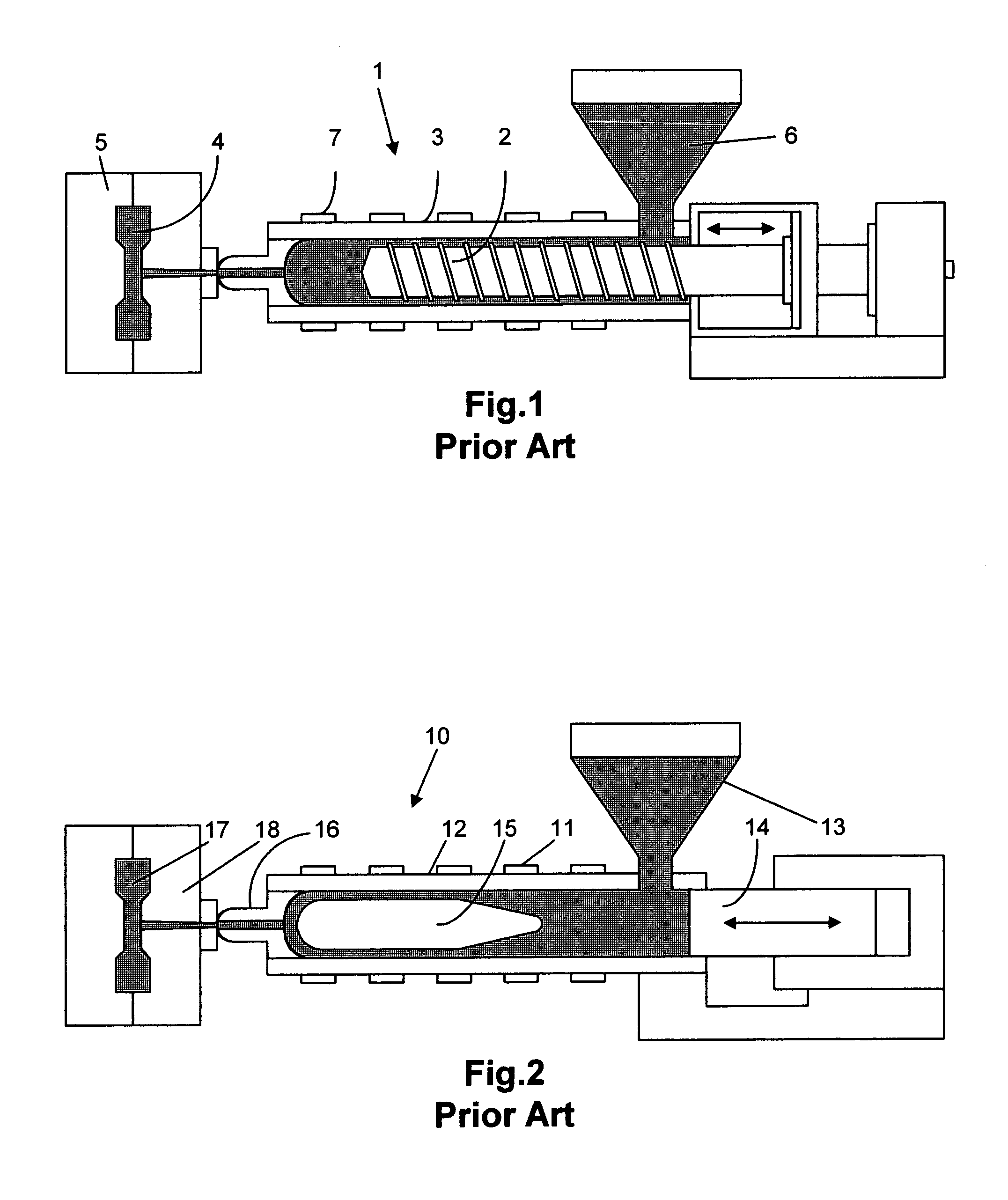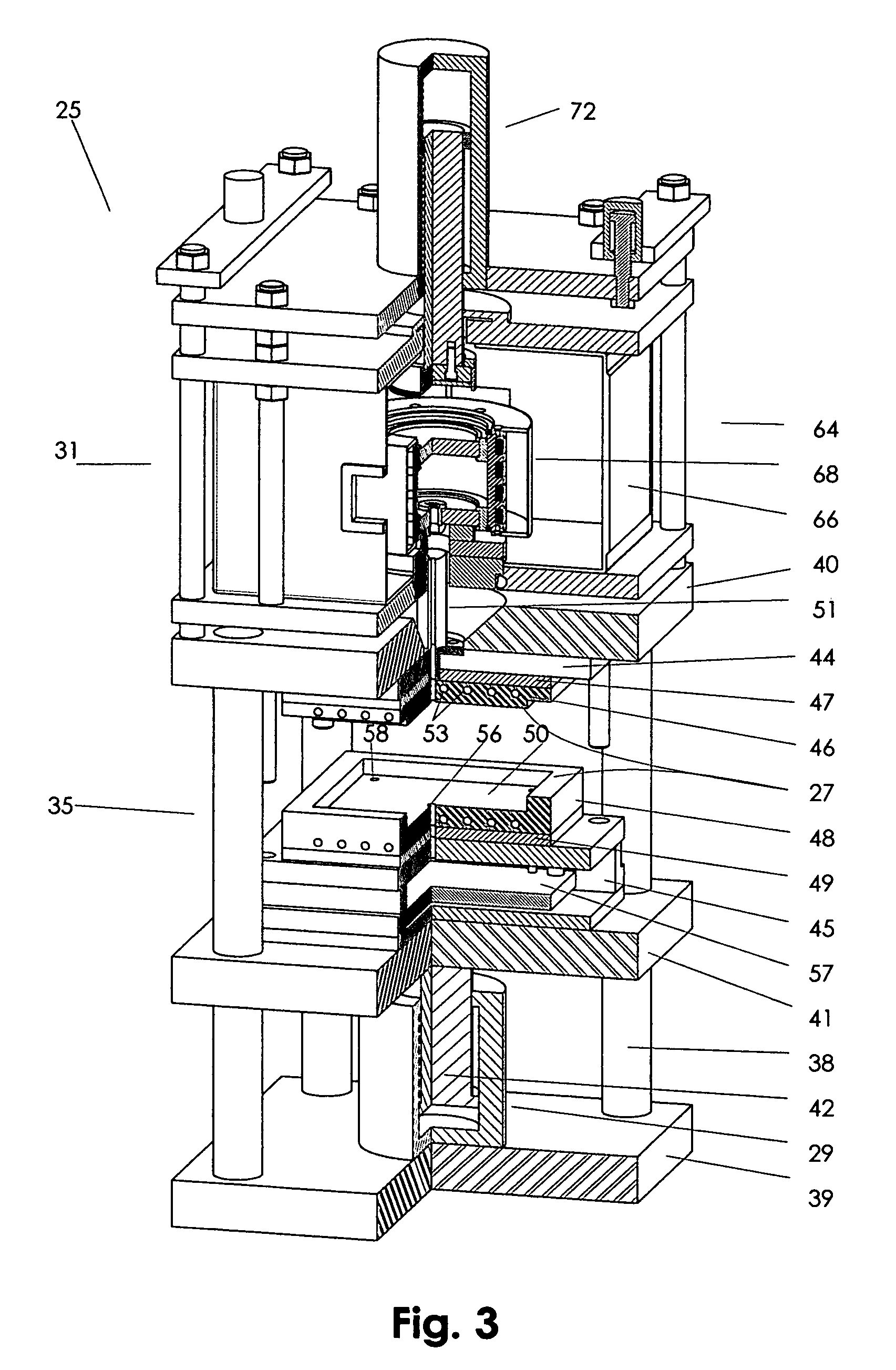Injection molding of polymers by microwave heating
a technology of injection molding and microwave heating, which is applied in the direction of electric/magnetic/electromagnetic heating, manufacturing tools, applications, etc., can solve the problems of increased material and handling costs, inability to absorb microwave energy, and inability to achieve the effect of absorbing microwave energy
- Summary
- Abstract
- Description
- Claims
- Application Information
AI Technical Summary
Benefits of technology
Problems solved by technology
Method used
Image
Examples
Embodiment Construction
[0044]Referring to the drawings in more detail, one embodiment of a microwave injection molding system 25 of the present invention is shown in FIG. 3. The injection molding system 25 comprises an injection mold 27, a mold clamping press 29 for opening and closing the mold 27, a plasticizing unit 31 in which plastic granules are received and heated to their melting point and an injection assembly 33 for ejecting molten plastic out of the plasticizing unit 31 and into the mold 27. In the embodiment shown in FIG. 3, the foregoing components are all mounted or adapted to be supported on a frame 35.
[0045]The injection mold 27 and mold clamping press 29 are generally of conventional design. Referring to FIG. 3, the mold 27 shown for illustrative purposes, is shaped for molding rectangular shaped parts. It is to be understood that the mold may be designed or shaped to mold parts of various shapes and dimensions. The mold press 29 comprises a first set of tie bars 38 which are fixedly conne...
PUM
| Property | Measurement | Unit |
|---|---|---|
| compression pressure | aaaaa | aaaaa |
| heat deflection temperature | aaaaa | aaaaa |
| critical temperature | aaaaa | aaaaa |
Abstract
Description
Claims
Application Information
 Login to View More
Login to View More - R&D
- Intellectual Property
- Life Sciences
- Materials
- Tech Scout
- Unparalleled Data Quality
- Higher Quality Content
- 60% Fewer Hallucinations
Browse by: Latest US Patents, China's latest patents, Technical Efficacy Thesaurus, Application Domain, Technology Topic, Popular Technical Reports.
© 2025 PatSnap. All rights reserved.Legal|Privacy policy|Modern Slavery Act Transparency Statement|Sitemap|About US| Contact US: help@patsnap.com



